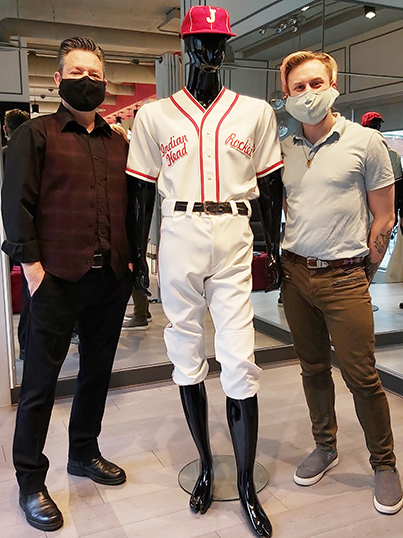
Indian Head Museum
The Indian Head Museum has taken advantage of facility closures initially caused by the COVID-19 pandemic to complete some renovations.
The historic fire hall building, which houses the museum, on the south side of Otterloo Street, has been closed to the public for the past two summers. However, volunteers and students have been busy scraping crumbling plaster and repainting walls on the main floor. They are also reorganizing memorabilia for various exhibits, including one uniquely designed to showcase the Rockets.
The Rockets were an African-American team that played in tournaments across the prairies in the 1950s. Jim Robinson, who was mayor of Indian Head at the time, bought the Jacksonville Eagles, a Negro League franchise, from promoter Syd Pollock. When the team moved from Florida to Saskatchewan, its name was changed to Rockets.
They played four seasons and were very popular, with thousands of spectators attending games. Eventually, the town could not compete with salaries offered in the U.S. and some of the players, like Tom Alston and Elijah “Pumpsie” Green, continued their careers elsewhere with teams like the St. Louis Cardinals and Boston Red Sox.
The Rockets will be inducted into the Saskatchewan Baseball Hall of Fame next year. Coinciding with this honor, the Indian Head Museum is preparing a display dedicated to the team.
“We were thinking about how to present the Rockets’ story and the idea of a dugout came up,” museum president Robyn Jensen explained. “We want to have it immersive so when people come they feel like they are really there in the dugout or stands.”
Local contractor Rod Vance donated his time to construct walls for a dugout scene beside the Métis exhibit that was completed in 2019. The back wall was covered with repurposed metal siding recently removed from the current fire hall building across the street.
A large photo over the display and a sports broadcast recording may contribute to the sights and sounds of the ball diamond. Efforts are also being made to locate video footage recorded in 1948 by a reporter from the Associated News of Vancouver.
The display will include Rockets’ memorabilia and photos, much of which was donated by Ken McCabe. Since there were no uniforms among the artifacts, the museum commissioned Dean Renwick Design Studio in Regina to create a replica based on photographs. Renwick has done an exceptional job and the museum greatly appreciates his collaboration.
The board anticipates that the new Rockets’ display and other exhibits will be open to the public during the museum’s regular summer season in 2022.









